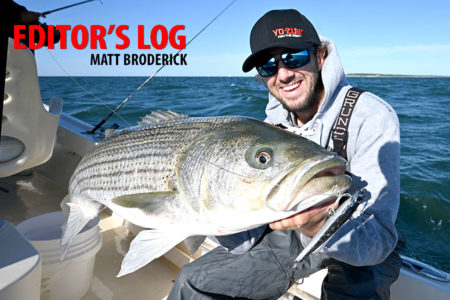The national debate over our federal fisheries law, the Magnuson Stevens Fisheries Conservation and Management Act (Magnuson), returned to Capitol Hill as the House Natural Resources Subcommittee on Water, Oceans and Wildlife convened on May 1 for an oversight hearing on “The State of Fisheries.” Magnuson has been a heated topic since it was last reauthorized in 2007, with issues related to rigid annual catch limits, fisheries closures and the introduction of limited-entry catch shares and fish tags into mixed use commercial and recreational fisheries. Of particular concern to anglers and members of the recreational fishing and boating industry is the current state of black sea bass and summer flounder, two species managed federally under Magnuson. Fellow California Rep. Tom McClintock of California, the subcommittee’s ranking Republican, criticized annual catch limits, stating that “Nearly 90% of federally managed fisheries fall below catch limits, meaning that our commercial and recreational fishermen are not being allowed to harvest at maximum, sustainable levels.”
New Jersey Rep. Jeff Van Drew opened up his remarks by calling for “greater flexibility” in how various provisions in Magnuson are enforced. After first introducing a letter from fellow democrat, Rep. Frank Pallone, Rep. Van Drew described the need for more flexibility in Magnuson at the fishery management council level as being generally supported by the National Marine Fisheries Service and the council coordinating committee. “I think perhaps it’s time that Congress make flexibility a requirement of the Magnuson Stevens Act as well by enacting bipartisan reform that is science-based, and also does achieve fisheries management objectives,” Rep. Van Drew noted. The start of the subcommittee hearing was delayed by a half hour due to a floor vote by the House of Representatives, and featured two panel discussions. The second focused specifically on The State of U.S. Fisheries. Abundance or access? That became the gray area in the ensuing half-hour debate between those who wish to leave Magnuson as is, and those who believe that fluke, sea bass and red snapper in particular showcase the inherent problems with the way the federal fisheries law is written. In representing the upstart American Saltwater Guides Association, New York fly and light tackle guide, Capt. John McMurray, spoke for 5 minutes about the benefit of more conservative management of species like fluke and sea bass, and the need to “keep more fish in the water” for increased abundance. According to McMurray, the “abundance” of popular species such as summer flounder has resulted in improved access for anglers because fish can now be caught “with some consistency close to shore, in the bays, and even from the beaches and the docks.”
Nick Cicero of the Folsom Corporation (Tsunami, Bimini Bay), a wholesale distributor and manufacturer of fishing tackle, followed with 5 minutes of testimony related to the fishing community in our region where he said “Statistically, we’re losing anglers and recreational fishing businesses too.” A member of the board of directors of the Recreational Fishing Alliance (RFA), an advisor on the International Commission for the Conservation of Atlantic Tunas (ICCAT) and a former professional captain himself, Cicero pointed to the 40% increase in fluke quota for 2019 where anglers saw “a zero net gain” as a prime example of the problem with Magnuson. “The true intent of Magnuson is clearly not being met,” Cicero said in his testimony, adding “we’re no longer managing for sustainability, we’re managing for abundance and preservation, and it is killing our recreational fishing community.”
During the 20-minute question and answer period Rep. Huffman questioned some of Cicero’s industry stats showing losses in the recreational sector, while citing an American Sportfishing Association (ASA) study released in 2018 that showed the number of U.S. anglers increased 8% between 2011 and 2016. However, that report (Sportfishing in America: An Economic Force for Conservation) showed that freshwater fishing participation actually grew by 11% during the timeframe, only helping offset a 6% decrease in saltwater angler participation during that five-year period. Share your opinion at The Fisherman’s Facebook page.



